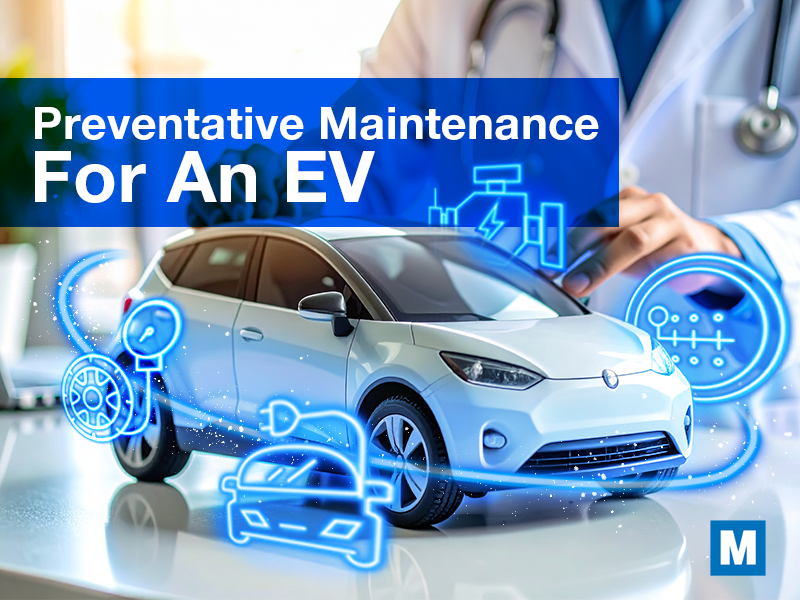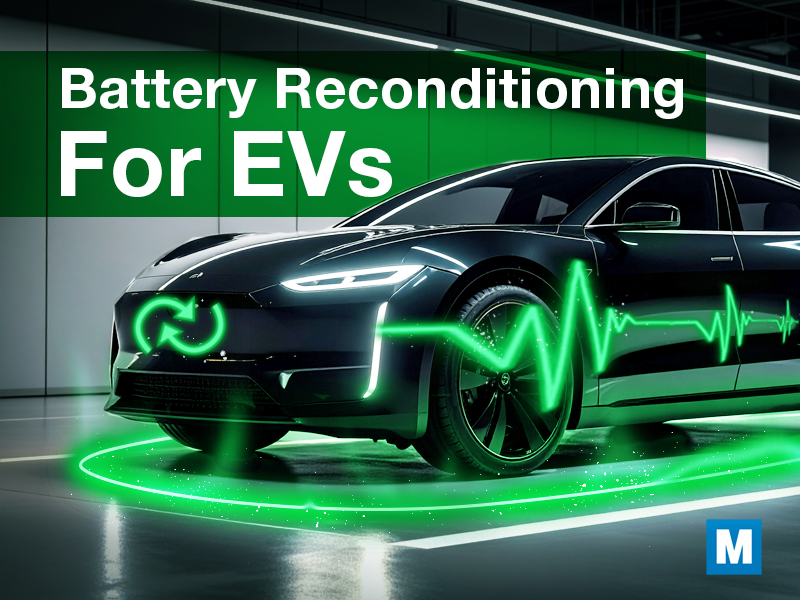Electric vehicles (EVs) are taking the world by storm, offering a green alternative to traditional fuel-powered cars. But, as with any technology, they come with their own set of challenges, one of the most significant being battery degradation. Understanding this phenomenon and knowing how to slow it down can drastically improve the lifespan and performance of EV batteries.
Most importantly, from the service level, knowing what degradation is and what’s necessary to keep it in check is fundamental. Whether you’re selling or servicing EVs, customers are guaranteed to have questions about their battery at some point. Here, we unravel the science behind EV battery degradation and explore ways to mitigate it.
Understanding EV Battery Degradation
First things first, what exactly is battery degradation? Simply put, it’s the process through which a battery loses its capacity to hold charge over time. To illustrate it to a customer, have them look at their smartphone and recall how it used to stay charged all day when it was new. But a couple of years down the line, they’re reaching for the charger by lunchtime. That’s battery degradation in action.
In EVs, this means reduced range and performance. Several factors contribute to this, from the way the battery is used to the external environment it operates in. EVs predominantly use lithium-ion batteries, praised for their high energy density and long recharge cycles. However, like all batteries, they’re not immune to wear and tear. The chemistry inside these powerhouses involves moving lithium ions back and forth between electrodes. Over time, this movement can lead to physical and chemical changes that reduce the battery’s efficiency. If ions become trapped or the active material is sulfated – essentially blocking ions from moving – the battery’s capacity suffers.
External Factors Influencing Degradation
Vehicle owners might be surprised to learn that something as simple as the weather can significantly impact a EV battery’s health. Both high and low temperatures can significantly affect battery health. High temperatures can accelerate chemical reactions within the battery, leading to faster degradation. On the other side, low temperatures can reduce the battery’s ability to efficiently accept and hold a charge. Consistently operating or charging an EV in extreme temperatures without proper thermal management can lead to significant degradation over time.
While fast charging is convenient, frequently using rapid charging stations can contribute to battery degradation. Fast charging increases the temperature and can strain the battery more than slower, conventional charging methods. This doesn’t mean that fast charging should be avoided entirely, but it’s beneficial to use it with caution.
Internal Mechanisms of Wear and Tear
Every charge and discharge cycle puts stress on the battery, leading to wear and tear over time. The extent of degradation depends on the depth of discharge, and shallow are generally less harmful than deep cycles. The cumulative effect of these cycles contributes significantly to battery degradation.
Regardless of how a battery is used, it will degrade over time. This natural aging process occurs from the moment the battery is manufactured and continues throughout its life. Factors like the storage environment can influence the rate of calendar aging, with higher temperatures typically accelerating the process. The quality of materials used to manufacture it also play a part, and impurities can play a part in faster degradation.
Technological Advances in Battery Health Monitoring
Here’s where things get exciting. Today’s technology allows for monitoring and predicting battery health with impressive accuracy. Onboard systems have evolved to be much more precise than early iterations, and degraded batteries typically show reduced range on a full charge along with potential error messages or DTCs.
Advanced diagnostic tools like Midtronics GRX-5100 EV/HEV Battery Service Tool can assess a battery’s condition, helping service shops interpret the results and communicate them so car owners can make informed decisions. This technology not only extends the life of EV batteries but also enhances safety and reliability.
Best Practices for Mitigating Battery Degradation
So, what can you do to help keep customers’ EV’s batteries in tip-top shape? First off, encourage them to avoid extreme charging and discharging where possible. Keeping their battery charge between 20% and 80% can significantly prolong its life.
Also, it pays be mindful of temperature extremes. Parking in the shade on hot days or in a garage during cold winters can make a big difference. And, of course, regular health checks using advanced diagnostic equipment can catch potential issues before they become serious problems, which is why regularly scheduled service appointments are still crucial.
But as is the way with any wearable items in vehicles, batteries will eventually need servicing. Preventative maintenance can include monitoring for discrepancies, and when they’re detected, recommending the appropriate repair. Rather than a complete pack replacement, changing battery modules that are weak or failing in battery packs, then following it up with module balancing, could be an established practice.
Future Outlook and Innovations
The future looks bright for EV batteries. Researchers and engineers worldwide are hard at work developing new materials and technologies to reduce degradation. From solid-state batteries to advanced Battery Management System (BMS) software, these innovations promise to deliver longer-lasting, more reliable batteries.
Conclusion
Battery degradation is an inevitable part of an EV’s life. But with the right knowledge and tools, we can significantly slow down this process, ensuring customers’ electric vehicles remain powerful and efficient for years to come. By understanding the science behind battery degradation and embracing best practices and technological advancements, you can do your part in a more sustainable, electric-powered future.
Whether you’re managing a fleet of electric buses or simply passionate about EV technology, keeping abreast of the latest in battery health and maintenance is key. And for those looking to delve deeper into the world of automotive battery testers and diagnostic equipment, there’s never been a better time to explore the options available.
Let’s keep the conversation going. What strategies have you found effective in prolonging the life of your EV customers’ batteries? Share your experiences and tips in the comments below, or reach out to us at Midtronics for more information equipment to maintain EV battery health.




